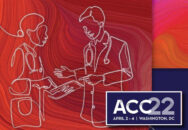Cardiovascular disease is the leading cause of death in elderly adults (individuals aged 75 years or older). In turn, coronary heart disease is one of the main causes of morbidity in this population. In addition to anatomical complexities, there are other factors that may complicate its management, such as polypharmacy, frailty, and procedure-related risks. All of…
ACC 2022 | APOLLO
Lipoprotein a (Lp a) is an important risk factor for atherothrombosis and atherosclerotic cardiovascular disease, but it has no approved treatments to this day. The aim of this randomized study in phase 1 was to assess adverse events and siRNA tolerance (small interfering RNA) to reduce liver production of Lp a and assess plasma concentration…
Olive Oil and Cardiovascular Risk: The Higher the Consumption, the Lower the Risk?
High olive oil intake was associated with lower risk of coronary heart disease and cardiovascular disease in two large prospective cohorts of men and women. The substitution of margarine, butter, mayonnaise, and dairy fat with olive oil can have a significant impact on cardiovascular health. The benefits of olive oil intake have been well studied…
Prolonged Exposure to Pollution Increases the Risk for Cardiovascular Disease
In the midst of the COVID-19 pandemic, it is hard to think of anything else that might be affecting worldwide health, particularly in China. As a topic, pollution (especially by fine particulate matter, PM2.5) has been relegated these days. At the same time, however, the preventive closing of many factories in China due to the…
ECS Guidelines for COVID-19 Management
One of the first statements in this document points out these are not “regular guidelines” developed after thorough analysis of all the available evidence published since the last update. Instead, they are meant to provide temporary basic management pointers on how to handle different scenarios of cardiac patients in the context of the COVID-19 pandemic.…




